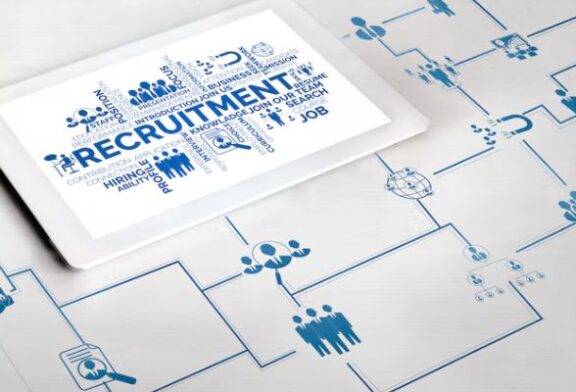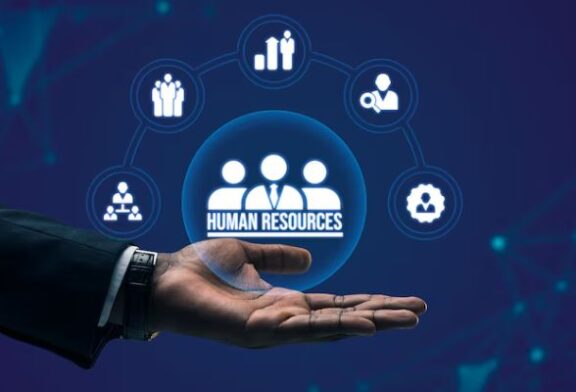Do you know that over 40% of HR leaders expressed a lack of a long-term workforce plan? But it is important to think about the future needs of your organization. Strategic Human Resource Management (SHRM) is a process that prioritizes alignment between HR strategy and business goals. If you are wondering how you can adopt an SHRM approach to prepare your organization for the future, keep reading.

What Is Strategic Human Resource Management (SHRM)?
SHRM involves the development and implementation of people strategies in an organization. The process is concerned with attracting and retaining talented individuals in a company. SHRM is also focused on motivating and managing them. SHRM pays attention to long-term resourcing as well. It is also about designing practices and policies for ensuring fair employee relations.
How Strategic HR Management Differs from Operational HR
SHRM emphasises the long-term goals of a business. Operational HRM is focused on the daily execution and administration of regular HR processes. Strategic HRM prioritises alignment between HR practices and the overall business strategy. So, it is a forward-thinking process. But operational HRM is about addressing current or abrupt needs. Hence, it is more reactive.
Here is an overview of the difference between operational human resource management and strategic human resource management.
| Strategic HRM | Operational HRM | |
| Focus | ◘ Long-term HR goals ◘ Alignment between HR process and business strategy | ◘ Immediate HR needs ◘ Day-to-day HR administration and routine tasks |
| Activities | ◘ Succession planning ◘ Performance management system development ◘ Building a talent pipeline ◘ Shape organisational culture | ◘ Recruitment and onboarding ◘ Payroll and benefit administration ◘ Employee record maintenance |
| Perspective | ◘ Proactive ◘ Forward-thinking | ◘ Reactive ◘ Focused on immediate needs |
| Outcome | ◘ Improved employee engagement ◘ Successful organisational change ◘ Sustainable competitive advantage | ◘ Uninterrupted HR operations ◘ Compliance with legal standards ◘ Satisfied employee needs |
Table 1: Strategic vs. Operational HRM
Why Strategic HR Management Matters for Business Success
What is SHRM? It involves the development of a coherent framework for HR processes. So, your organisation will have a standard guideline for hiring, managing, and developing employees. The framework ensures that HR processes are aligned with the long-term strategic goals of an organisation.
When human capital is in line with the overall business goal, your workforce will become high-performing and adaptable. Moreover, as a part of SHRM, future talent needs are planned proactively. So, employees can be developed according to future goals and anticipated needs. This creates competitive advantages and safeguards companies from resourcing issues.
Here are the factors that make SHRM important for businesses today.
- Alignment between business goals and HR process.
- Adaptability to resourcing issues and business environment changes.
- Hiring, retaining, and developing the right people with a consistent framework.
- Identification of future talent requirements.
- Proactive competency and knowledge development.
- Supports the organisational change process by aligning HR and business goals.
- Ensure compliance of HR practices with labor regulations.
- Foster a culture of engagement to create a positive work environment.
Key Characteristics of Strategic HR Management
Here are the key characteristics of SHRM. It helps you:
- Create HR strategies that support business objectives.
- Proactively anticipate and prepare for future workforce needs.
- Develop human capital to gain a competitive advantage.
- Create a common goal-aligned framework for all HR activities.
- Develop HR policies to foster a strong organisational culture.
- Create flexible HR policies for quickly responding to changes.
- With data-driven insights to continuously improve HR practices.
- Foster collaboration between line managers and HR staff.
- Support continuous upskilling initiatives and employee growth.
- Ensure workforce diversity amidst culturally different employees.
What are the Benefits and Drawbacks of Strategic HR Practices?
Check out the benefits and drawbacks of implementing SHRM.
Benefits
SHRM will help align employee skills with organisational goals. So, you will notice improvement in productivity and performance.
SHRM offers upskilling and career growth opportunities. This improves employee retention and engagement. More than 30% of employees will start looking for a new job if they get bored. It will also position your workforce to create a competitive advantage for the business.
SHRM also helps create a future-ready workforce and talent pipeline. Therefore, your organisation will become more agile and resilient. Your organisation will become more adaptable to changing business needs and market conditions.
Talent pipeline development will also help you with succession planning. And it also helps maintain diversity in the workforce. This is important as companies with gender and ethnic diversity help outperform their less diverse counterparts by 25% and 36%, respectively.
HRM also helps create a strong culture by aligning HR policies with the organisational mission. A strong culture also improves the work environment. More than 50% of employees will voluntarily resign if they don’t like the work environment.
HR process frameworks developed as a part of the SHRM process can improve collaboration. The standard frameworks ensure that HR practices are consistent across departments.
SHRM will optimise the workforce planning process. It will also allow data-driven decisions related to human capital. So, you will also enjoy cost savings. This is also why more than 70% of organisations intend to spend more on HR technology.
Drawbacks
It may get expensive to develop and implement SHRM practices. This can be a challenge, particularly for small organisations with limited budgets. The process can be time-consuming. It can also be complex.
Changes in HR policies can disrupt the everyday ways of working. This can lead to employees displaying resistance to change. And this is why getting the buy-in of people in the process is important.
SHRM initiatives can result in the need to downsize or restructure. This can lead to job losses and thus dissatisfied employees. So, maintaining a positive employee morale can be a challenge in SHRM implementation.
Effective SHRM requires accurate data. Insufficient or inaccurate data can result in wrong decisions and flawed strategies. The overall outcomes will be ineffective in such cases.
Improper planning of SHRM practices can lead to violations of labor rights. For instance, failing to consider diverse genders or ethnicities in the talent pipeline can lead to claims of inequality.
Some organisations may find it difficult to justify the investment in SHRM. This may happen if the Return-On-Investment (ROI) couldn’t be measured properly.
Building a Strategic HR Management Plan: Step-by-Step Guide
Here are the steps for building a strategic human resource management plan.
Step 1: Understand Business Goals and Drivers
Understand the goals of your business. Also, think of the broader strategy that you will use for achieving and measuring the goals. Point out the areas of improvement in the strategy. Think of ways to align the HR strategy with the business goals. Think about how you can build human capital to support goal achievement.
Step 2: Align HR Objectives with Organisational Strategy
Ensure that the HR practices are aligned with the HR strategy needed to achieve business goals. This means that tasks like recruitment, compensation planning, and performance management are run according to the HR strategy.
For example, the performance evaluation process should focus on the qualities needed to meet organisational goals. And the HR strategy should emphasise the recruitment and upskilling of people with those qualities. It is about giving priority to the HR practices that help you execute your goal-oriented HR strategy.
Step 3: Use HR Analytics to Guide Decision Making
Data is important for making critical decisions. Data is also needed for measuring the impact of SHRM. Align your HR Key Performance Indicators (KPIs) to your organisational strategy. Access people analytics to understand how HR policies are contributing to business objectives.
The purpose of HR analytics should be to understand where certain talents are required in the organisation. Companies are 2x more likely to outperform than competitors if the key talents are reallocated to high-priority initiatives.
Step 4: Design Talent, L&D, and Culture Initiatives
You need to ensure that other HR responsibilities are not neglected when focusing more on SHRM. Once a strategy is planned, executing it successfully is what matters. Bring together the people from your HR department. Focus on designing initiatives for talent management and high-performance culture. Also, focus on Learning and Development (L&D) initiatives.
Create a framework in line with the HR strategy. This framework should be used to maintain consistent HR practices. From onboarding employees to managing compensation, everything must be guided by the strategic HRM framework.
Step 5: Review, Measure, and Adapt HR Strategy
You need to keep reviewing your HR strategy. You need to measure the performance of the new HR policies and initiatives. HR analytics will help you measure the output of staff members.
Data from other systems will help you understand the impact of SHRM on various business functions. Identify practices that can be improved. Keep adjusting your HR strategy for better outcomes.
Best Practices for Strategic HR Management in Modern Organisations
Here are some of the best practices for SHRM in the organisations of today.
Take an Outside-In Perspective on HR
Analyze external factors like competitor strategies and industry trends. Also, consider the changing needs of employees and customers. The changing and future needs must be anticipated. Workforce and HR strategies must be prepared proactively.
Integrate Technology and Data Across HR Functions
You should always take advantage of data analytics. Use the data to make informed decisions about hiring, training, and performance management. Automation tools can make HR processes efficient and simple. Also, use learning Management Systems (LMS) for creating personalised learning paths for key talents.
Ensure Consistency Across Talent, Culture, and Strategy
Your HR strategy should be in line with the overall business strategy. Make sure you are adapting talent acquisition and development efforts to support company goals. Focus on creating a positive culture as that drives employee motivation. Develop a framework to guide HR practices and ensure organisation-wide coherence.
Build Strategic Partnerships Within the Business
The HR department needs to work closely with other departments. They must also work closely with the leaders in your organisation. The leaders and other departments must understand the needs of the HR team. Shared responsibilities must be established. Collaboration between departments will help ensure that HR initiatives and broader organisational strategies are aligned.
Ready for Strategic HRM Implementation?
SHRM can help your organisation prepare for future workforce needs. It can ensure that the HR and broader business strategies are lined up. It helps with workforce development. It helps with employee performance improvement. And it makes an organization more resilient and adaptable to changes in the external business environment.
HR analytics available with Human Resource Management Systems (HRMS) can help you with successful strategic HRM planning. Accurate data will help you design an SHRM plan that leads to improved organisational outcomes. So, start the strategic HRM planning process and get an HRMS now.
Frequently Asked Questions
Do I Need a SHRM Process if There is an HRM Process in Place Already?
Yes. You will still benefit from SHRM even if there is an HRM process in place. HRM is focused on the regular operations related to employee management. But SHRM takes a future-focused strategic approach. The purpose of SHRM is to align the HRM practices with the overall goals and strategies of your organisation.
How Can I Implement an SHRM Process in My Organisation?
Start by defining the vision and goals of your organisation. Next, perform an analysis of your workforce. Identify current skill gaps and future needs related to achieving the organisational goals. Develop HR initiatives and strategies to meet the anticipated needs. Implement the strategies and initiatives, and monitor their impact on goal achievement. Finally, continuously evaluate the process and apply improvements.
Can I Get a Software or Platform for SHRM?
There is no single software or platform specifically for SHRM. It is a process that can be supported by various HRM tools. You can get HRMS software to support your SHRM planning process. It will offer you diverse HR management and analytics tools for strategic HRM planning.
What Are Some Major Functions in the SHRM Process?
SHRM is concerned with almost every HR function. It is focused on talent acquisition and performance management. It supports current learning requirements. It also supports anticipated skill development needs for the future. SHRM is also about planning the right compensation and benefits. It is also about driving employee engagement. And most importantly, it supports succession planning.





